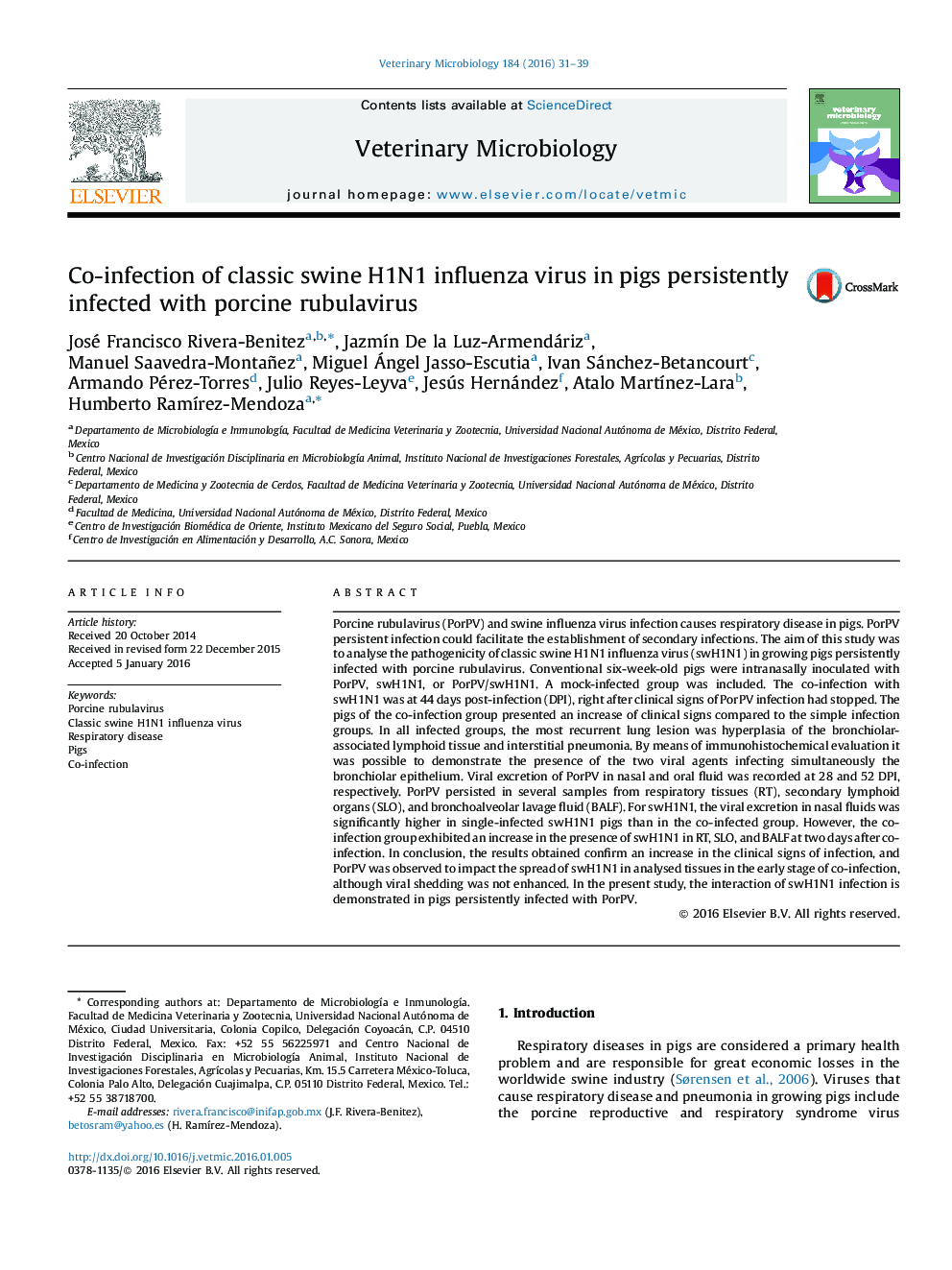| کد مقاله | کد نشریه | سال انتشار | مقاله انگلیسی | نسخه تمام متن |
|---|---|---|---|---|
| 2466467 | 1555339 | 2016 | 9 صفحه PDF | دانلود رایگان |

• We analyse the co-infection of swine H1N1 influenza virus and porcine rubulavirus.
• Pigs of the co-infection group presented an increase of clinical signs.
• Interaction of two viruses infection is demonstrated in growing pigs.
Porcine rubulavirus (PorPV) and swine influenza virus infection causes respiratory disease in pigs. PorPV persistent infection could facilitate the establishment of secondary infections. The aim of this study was to analyse the pathogenicity of classic swine H1N1 influenza virus (swH1N1) in growing pigs persistently infected with porcine rubulavirus. Conventional six-week-old pigs were intranasally inoculated with PorPV, swH1N1, or PorPV/swH1N1. A mock-infected group was included. The co-infection with swH1N1 was at 44 days post-infection (DPI), right after clinical signs of PorPV infection had stopped. The pigs of the co-infection group presented an increase of clinical signs compared to the simple infection groups. In all infected groups, the most recurrent lung lesion was hyperplasia of the bronchiolar-associated lymphoid tissue and interstitial pneumonia. By means of immunohistochemical evaluation it was possible to demonstrate the presence of the two viral agents infecting simultaneously the bronchiolar epithelium. Viral excretion of PorPV in nasal and oral fluid was recorded at 28 and 52 DPI, respectively. PorPV persisted in several samples from respiratory tissues (RT), secondary lymphoid organs (SLO), and bronchoalveolar lavage fluid (BALF). For swH1N1, the viral excretion in nasal fluids was significantly higher in single-infected swH1N1 pigs than in the co-infected group. However, the co-infection group exhibited an increase in the presence of swH1N1 in RT, SLO, and BALF at two days after co-infection. In conclusion, the results obtained confirm an increase in the clinical signs of infection, and PorPV was observed to impact the spread of swH1N1 in analysed tissues in the early stage of co-infection, although viral shedding was not enhanced. In the present study, the interaction of swH1N1 infection is demonstrated in pigs persistently infected with PorPV.
Journal: Veterinary Microbiology - Volume 184, 29 February 2016, Pages 31–39